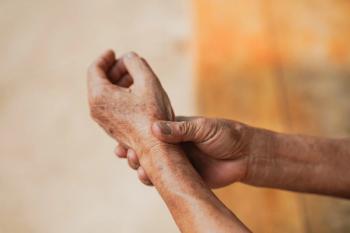
New Model Risk Factors for HIV in Women Include Pregnancy, Hepatitis C, and Substance Use
A new model produces information that can lead to individual providers identifying women who may need more targeted and more frequent HIV testing or be good candidates for preexposure prophylaxis.
A version of article was originally
A new predictive model identified risk factors such as a recent pregnancy, recent diagnosis of hepatitis C virus (HCV), substance use, and STI diagnosis in women who are vulnerable to HIV, a new study published in
“Most notably, the final model identified three relatively novel factors - pregnancy in the last two years, hepatitis C diagnosis in the last two years, and diagnosis of substance use in the last two years—that may assist in identifying women at increased risk for HIV using [electronic medical record] data,” the researchers said.
Data were taken from 2 large opt-out HIV testing programs within Rush University Medical Center and University of Chicago Medicine. Participants also had to be female and have underwent HIV testing within a 6-year period from 2014 to 2020, the investigators noted.
Of the 55,736 women who underwent testing during that 6-year period, 48 who were newly diagnosed with HIV were included in the study, as well as 192 women who don’t have HIV but were matched to those cases using propensity score matching based on health care site and number of prior medical encounters, leading to a total of 240 women in the study.
The women in the sample were 67.9% African American/Black, 85.4% non-Hispanic/Latina and were from either the West or the South side of Chicago, the results show. When looking at medical diagnoses, pregnancy (26.3%) and mental health disorders (24.6%) were seen in around a quarter of the population, whereas STI and HCV diagnoses were less common.
In the sample, African American women had approximately 5 times the likelihood to be newly diagnosed with HIV in comparison with white women (OR, 4.98; 95% CI, 1.47-16.90), the results show. Further, the results show that pregnant women had twice the odds of being diagnosed with HIV than non-pregnant women (OR, 1.96; 95% CI, 1.00-3.84), and those with HCV had 5 times the likelihood of being diagnosed with HIV than those without (OR, 5.73; 95% CI, 1.24-26.51).
In determining their final model, the researchers said they included these variables: pregnancy, HCV, substance use, STIs, race, ethnicity, age group, number of encounters, and health care site, coming to an AUC of 0.74 (95% CI, 0.67-0.81).
Investigators wrote that the final model performed significantly better than others, including a baseline model including only matching factors and STI diagnoses in the past 2 years (AUC, 0.54; 95% CI, 0.44-0.63) and a model consisting of matching factors and demographic factors, such as age, race, and ethnicity (AUC, 0.69; 95% CI, 0.61-0.77).
This model has the potential to produce information that can lead to individual providers identifying women who may need more targeted and more frequent HIV testing or be good candidates for preexposure prophylaxis (PrEP), according to the study authors.
The researchers noted, in particular, the recognition of recent pregnancy as a risk factor for HIV can be useful in expanding PrEP discussions to more women who engage in unprotected sex.
“Public health practitioners should consider pregnant women and women who have recently given birth to be especially vulnerable to HIV infection,” the investigators emphasized.
The findings of the study also reinforce previously established racial disparities in diagnosing and treating HIV, because African American women were more likely to be newly diagnosed with HIV, and the general population of participants were likely to be from the West or South sides of Chicago, which have a high minority population.
“We identified risk factors including pregnancy, hepatitis C diagnosis, substance use diagnosis and STI diagnosis in a two-year period prior to HIV diagnosis that can be used to identify women who are vulnerable to HIV and would benefit from PrEP,” the researchers concluded.
Reference
Friedman E., et. al. (2023) Development of a predictive model for identifying women vulnerable to HIV in Chicago. BMC Women’s Health. Published online June 16, 2023. doi:10.1186/s12905-023-02460-7
Newsletter
Stay ahead of policy, cost, and value—subscribe to AJMC for expert insights at the intersection of clinical care and health economics.













































